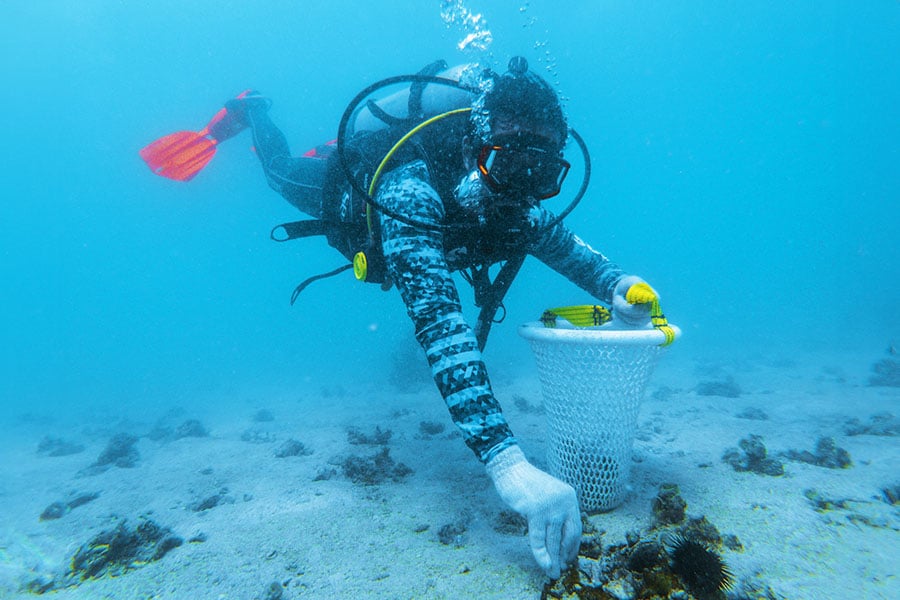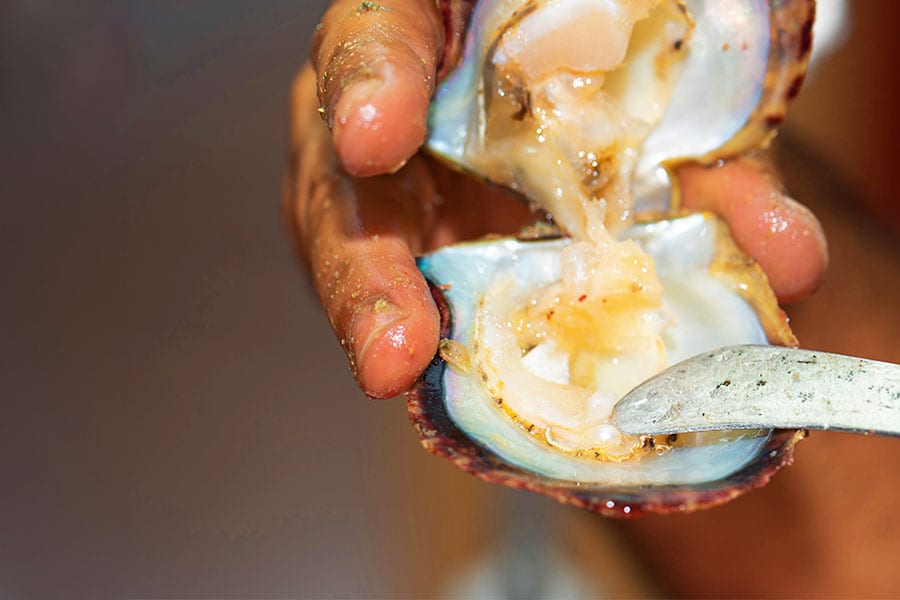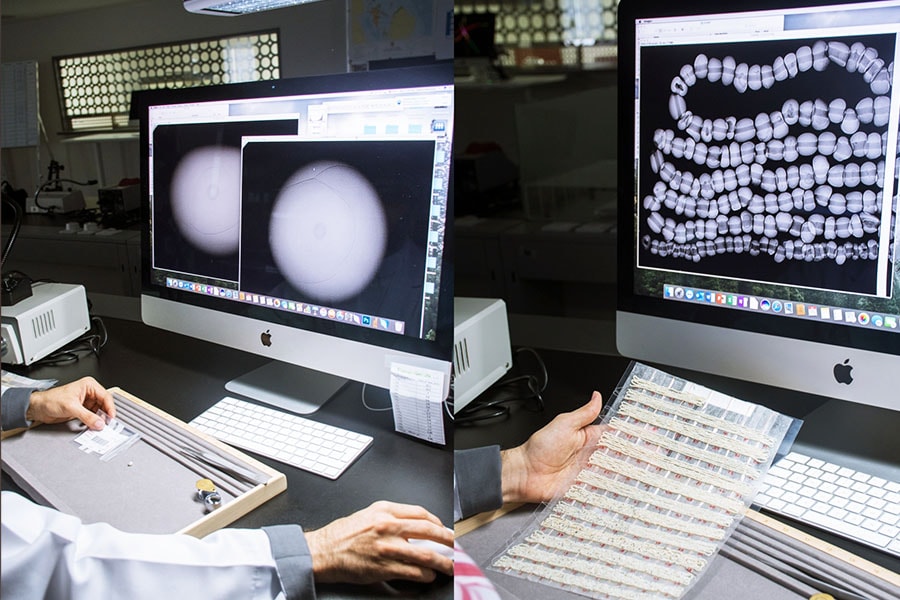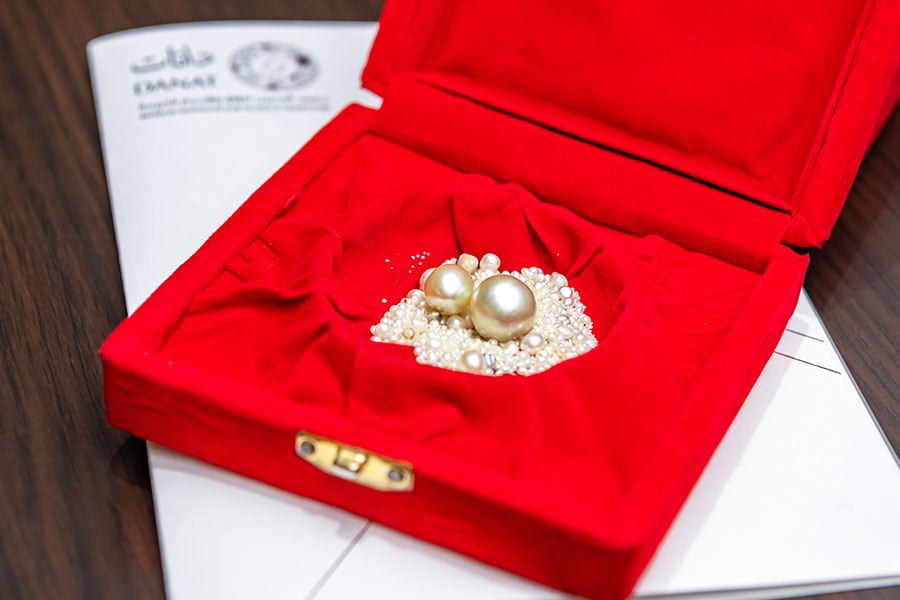
How Bahrain is poised to reclaim its title as the world's 'pearl capital'
After 85 years, Bahrain has re-prioritised sustainability in its bid to offer visitors a chance to experience its pearl heritage beneath the waves of the Arabian Gulf
 A DANAT pearl diver harvests oysters in the waters of Muharraq, Bahrain Image: Courtesy DANAT
A DANAT pearl diver harvests oysters in the waters of Muharraq, Bahrain Image: Courtesy DANAT
Bahrain's name stems from the fusion of two Arabic words—‘thnain Bahr’—translating to ‘two seas’, referencing the springs beneath the seabed merging with the highly saline water of the pearl banks. For centuries, Bahraini free divers braved the depths of the Gulf aboard traditional dhows, harvesting pearls, revered by royalty, fashion elites, and leading American, British and French jewellers.
However, this heritage dwindled amidst the harsh impact of the Great Depression, coupled with the emergence of cultured pearls from Japan. Following the onset of World War 2, the market relocated to Bombay. Over 500 tawâwîsh migrated from the Gulf to Bombay to sell pearls. “Hajras from Bahrain were among the most successful merchants who maintained offices in Bombay. The primary hubs for pearl trade was Moti Bazaar, with Mohammed Ali Road serving as one of the city’s oldest thoroughfares,” scholar Saif Albedawi wrote in a 2017 paper titled ‘Pearl Merchants of the Gulf and their Life in Bombay’.
Farah Mattar, director of Bahrain Authority for Culture and Antiquities, says, “The oyster beds in northern Bahrain were once the heart of a thriving pearl fishery, dominating the Arabian Gulf from ancient times until the early 20th century. This led to Bahrain's reliance on pearls, shaping its economy in the 19th century. Muharraq, the capital at the time, became the focal point of this single-product economy. The pearling season determined the livelihoods of many, including merchants, creditors, boat owners, captains, divers, hauliers, and sail-makers.” She adds, “Pearls collected in Bahrain were sent to Europe and India, where they were refined and traded to larger markets. Despite the decline of the pearl industry in the 20th century, its legacy endures as a significant aspect of Bahraini cultural identity.”
Acknowledging the historical importance of this tradition, Unesco added the Bahrain Pearling Trail to its World Heritage List in 2012, as a remarkable traditional marine resource utilisation and human-environment interaction. This site encompasses 17 properties within Muharraq, along with a natural coastline and three oyster beds, preserving the rich urban, architectural, and natural heritage of Bahrain's pearling economy. Successfully registered in 2012 and finalised in early 2024, the site spans 3.5 km at the core of historic Muharraq, offering a comprehensive narrative of the island's pearling history.
 Bahrainis uphold a proverb: It's not about who collected the oysters, but who shucked them," highlighting the profound importance of the shucking process over the act of diving itself | pictures Image: Courtesy DANAT
Bahrainis uphold a proverb: It's not about who collected the oysters, but who shucked them," highlighting the profound importance of the shucking process over the act of diving itself | pictures Image: Courtesy DANAT









